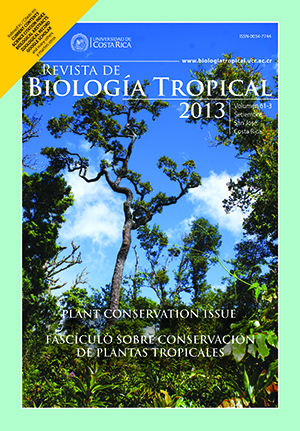Abstract
Vitex trifolia is a shrub species with popular use as a medicinal plant, for which leaves, roots and flowers have been reported to heal different distresses. The increasing exploitation of these plants has endangered its conservation, and has importantly justified the use of biotechnological tools for their propagation. Our aim was to present an efficient protocol for plant regeneration through organogenesis; and simultaneously, to analyze the genetic homogeneity of the established clonal lines by Randomly Amplified Polymorphic DNA (RAPD) and Inter Simple Sequence Repeat (ISSR) markers. Plantlet regeneration was achieved in callus cultures derived from stem, leaf and petiole explants of V. trifolia on a differently supplemented Murashige & Skoog medium, and incubated at 25±2ºC under a light intensity of 61μmol/m2s from cool white fluorescent lamps and a 16h photoperiod. The rate of shoot bud regeneration was positively correlated with the concentration of hormones in the nutrient media. Shoot buds regenerated more rapidly from stem and petiole explants as compared to leaf explants on medium containing 11.10μM BAP in combination with 0.54μMNAA. Addition of 135.74-271.50μM adenine sulphate (Ads) and 0.72-1.44μM gibberellic acid (GA3) to the culture medium increased the growth of shoot buds. The highest rate of shoot bud regeneration responses was obtained in stem explants using 11.10μM BAP in combination with 0.54μM NAA, 271.50μM Ads and 1.44μM GA3. In vitro rooting of the differentiated shoots was achieved in media containing 1.23μM indole butyric acid (IBA) with 2% (w/v) sucrose. Regenerated plantlets were successfully established in soil with 86% survival under field condition. Randomly Amplified Polymorphic DNA and Inter Simple Sequence Repeat markers analyses have confirmed the genetic uniformity of the regenerated plantlets derived from the second up to fifth subcultures. This protocol may help in mass propagation and conservation of this important medicinal plant of great therapeutic potential.##plugins.facebook.comentarios##
Downloads
Download data is not yet available.






